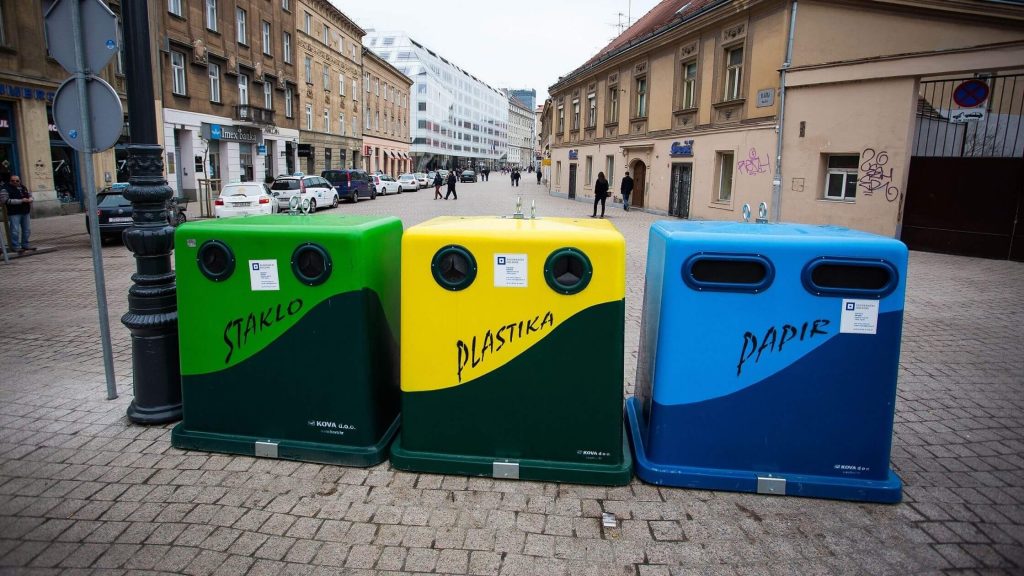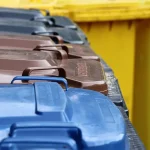Among the list of countries that recycled the most household waste between 2010-19, ranked by the European Environment Agency (using official data from Eurostat), Croatia ranked 2nd, for a household waste recycling rate that increased by 655% between 2010-19. Its recycling rate in 2019 was 30.2%, compared to only 10% in 2010. And in 2020, Croatia reduced the amount of municipal waste, increasing household waste separation and recycling rates. This worked effectively in keeping unnecessary waste out of landfills, saving energy and natural resources, and preventing air pollution.
In Croatia, household waste recycling is done by separating glass, metal, paper, biowaste, plastic, wood, electronics, and car waste at home. The separated disposal of these is achieved via containers for separate collection on households’ doorsteps, public areas, and vehicles for separate collection and sorting facilities. On the streets and near households, one can observe these waste container stations consisting of yellow bins for plastic (bottles, caps, plastic cups) and metal (metal caps, food and drink caps, aluminum foil), green bins for glass, and blue for paper. Plastics and metal are exported to other countries that can process and produce new products, paper and glass are fully recycled.
The method of households independently doing their own waste separation is one step ahead that Croatia possesses in their waste collection efficiency. There’s also the fact that returning the specific type of plastic bottle is encouraged, in exchange for a refund. Usually 0.5kn (50 lipa) per bottle, the system applies to water bottles, soda bottles, and soda cans. If the bottle has “Povratna naknada” (refund) on the label, along with the amount of the refund, it can be turned in at most (but not all) grocery stores in exchange for a refund. Definitely keeps you motivated to recycle, doesn’t it?
Croatia still has yet to step up its recycling game. The achieved recycling rate of 202 was 34%, significantly below its target rate of 50%. According to a report by Minister of Economy and Sustainable Development Tomislav Ćorić, Director of Institute for Environmental and Nature Protection Aljoša Duplić, and Director of the directorate for environmental impact assessment and sustainable waste management Anamarija Matak, 56% of the municipal waste ended up in landfills. Only 34% went to recovery (including recycling), and 9% went to mechanical-biological waste treatment plants. The 34% rate is an improvement as it has been growing by four percentage points year over year, but lower than the 50% goal regardless. The plan for 2022 is to have the landfill waste rate reduced to 25%.
But there is a new waste management system that is promising a clean environment and reduced carbon emissions. In the Zadar/Lika-Senj counties, the plan is for a faculty to be built for producing solid residual fuel (SRF) from mixed municipal waste, which will be incinerated in a cement kiln in Split, according to an agreement the beneficiary has with cement producer Cemex. The plan also includes a facility where green waste will be composted, and a site for processing construction and demolition waste. These transfer stations plus equipment (including vehicles and containers) should be capable of processing 31,000 tonnes of waste per year. The project area covers eight towns and 33 municipalities in the Zadar county and the southern half of Lika-Senj county – about 12 % of Croatia’s total surface area, serving a population of about 195 000 people. This project will result in significantly less household waste taken to landfills, keeping the desired landfill waste rate low, hopefully achieving that 25% goal.
For more, check out our lifestyle section.











